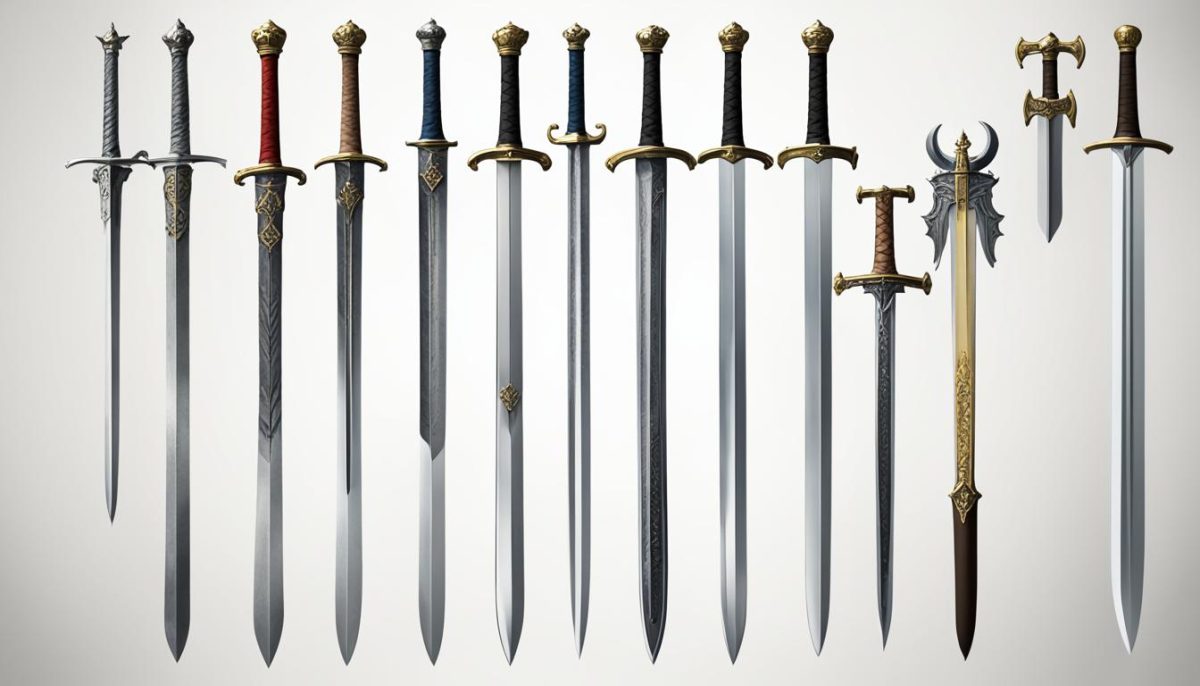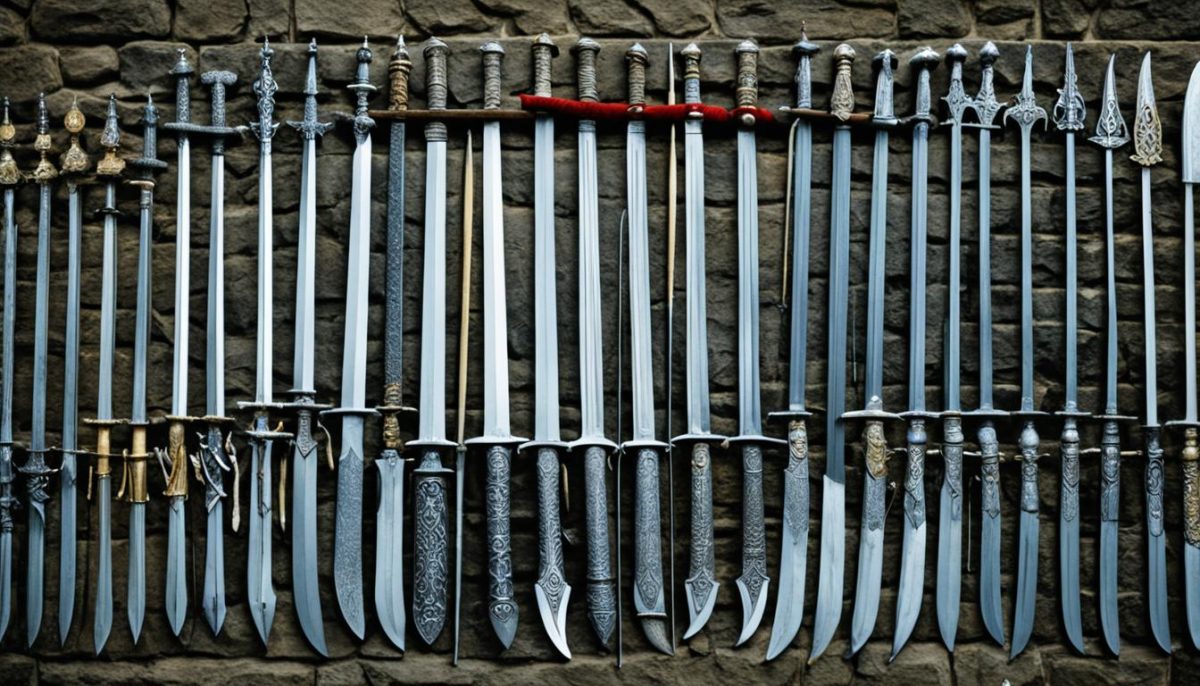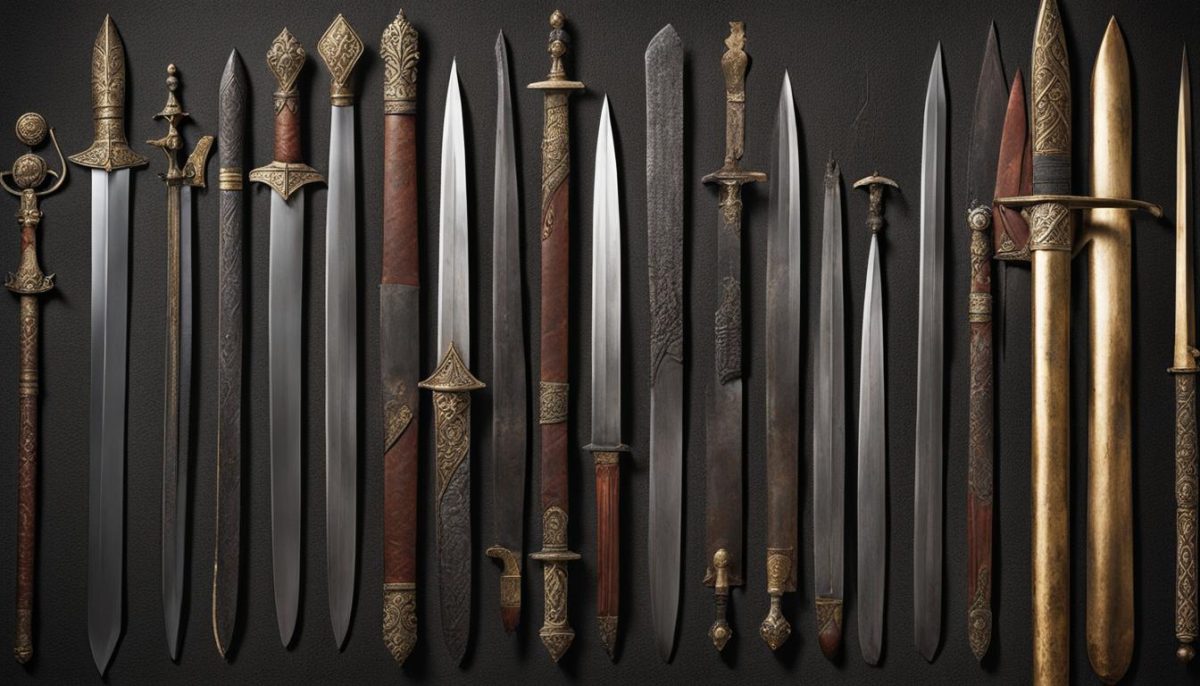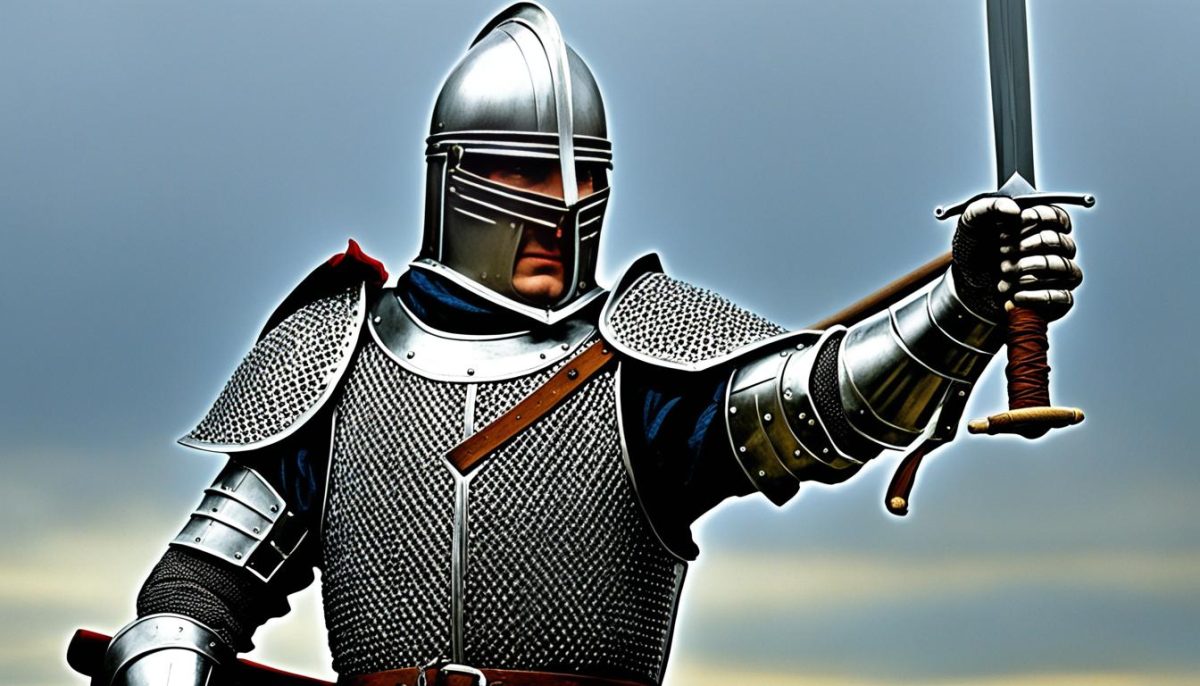When exploring the pantheon of medieval weaponry, the question of the sword weight often surfaces, intriguing both historians and enthusiasts alike. The weight of swords has played a crucial role in shaping the methods of warfare and the evolution of arms and armor. From the nimble blades that danced in the hands of agile duelists to the hefty broadswords that clashed on the front lines of battle, understanding the historical blades weight offers us a tangible connection to our ancestors’ martial craft.
In a journey through time, we uncover the heft of history—examining artifacts, delving into ancient documents, and consulting with experts—to reveal the reality of these historical armaments. The grip, the balance, and the strategic design behind each piece of steel tells a story not just of war, but of technological progress and cultural significance. Stay tuned as we cut through myths and measure the metal of history.
An Overview of Sword Types and Their Weights
The medieval battlefield was graced by a variety of sword designs, each tailored to specific needs and fighting styles. From the weighty broadsword to the deft rapier, ancient forges crafted blades that exemplified the technology and combat philosophy of their time. This comparative analysis highlights the nuances between different sword types and their associated weights, offering a glimpse into how these factors influenced both form and function.
The Broad Range of Medieval European Swords
Within the pantheon of medieval European swords, there existed a spectrum of designs suited to the demands of warfare. Encyclopedias of medieval weaponry provide detailed specifications of each type, indicating a diversity in blade length, edge, and heft. For instance, the Scandinavian ‘Viking sword’ was renowned for its broad, straight edges conducive to slashing, while later-period arming swords were lighter and more agile for one-handed use.
The Lightness of Rapiers Compared to Broadswords
Transitioning into the Renaissance, the emergence of the rapier marked a shift towards speed and precision. Contrary to the substantial heft of a broadsword, the rapier’s design favored finesse, characterized by a slender blade that reduced the overall rapier weight. This design philosophy fostered agility and was indicative of evolving combat techniques that prioritized thrusting attacks over the heavy slashes of the broadsword.
Comparing Eastern and Western Swords: Katana vs Longsword
A comparative analysis of the Japanese katana and the European longsword reveals significant contrasts rooted in cultural differences. The katana, with its curved blade, was engineered for swift, single-cut strikes, while the longsword’s straight, double-edged design allowed for both cutting and thrusting. Martial arts manuals and academic research underscore how each weapon’s unique characteristics catered to the specific martial traditions of the East and West.

Achieving a comprehensive understanding of these storied blades offers more than just historical insight—it affords a deeper appreciation of the skill and artistry embedded within each sword type. Through examining the medieval European swords, weighing the rapier’s agility against the broadsword’s heft, and exploring the katana versus longsword debate, we gain not only knowledge on the sword types comparison but an invitation to grasp the legacy of ancient warriors.
Much Swords Weigh: Factors That Influence the Heaviness of a Sword
The weight of a sword has always been a critical factor in its effectiveness as a tool of combat. Throughout history, a blend of sword weight factors, including metallurgy, weapon design, and sword balance, have contributed to the heaviness of a blade. Understanding these elements provides insight into the multifaceted process of sword-making and how it impacts the wielder.
Sword balance, in particular, is an essential aspect, affecting not only the weight but also the sword’s overall performance. A well-balanced sword offers better control and agility, making it a lethal instrument in both offense and defense. Let’s explore these weight factors in greater detail.
Key Aspects of Sword Weight:
- Material Composition: The type and quality of metal used in forging a sword play a substantial role in the final weight of the blade.
- Size: Naturally, longer and larger swords require more material and thus weigh more, while shorter, slimmer designs tend to be lighter.
- Design and Geometry: The cross-section, blade tapering, and other design features influence the distribution of mass and overall heaviness.
| Metal Type | Impact on Weight | Common Use |
|---|---|---|
| High Carbon Steel | Denser, heavier blade | Longswords, Broadswords |
| Iron | Heavier, more prone to corrosion | Early Medieval Swords |
| Alloy Steels | Lighter with improved strength | Modern Replicas |
| Damascus Steel | Balance of flexibility and weight | Historical Middle Eastern Blades |
| Titanium Alloys | Lighter and corrosion-resistant | Experimental/Decorative |
Advancements in metallurgy have had a remarkable impact on the evolution of sword weight. When assessing blade heaviness and craftsmanship, the forging techniques and the materials used are meticulously studied to understand the sword’s intended use and efficacy. The dynamic nature of weapon design throughout the centuries reflects the constant adaptation to meet the needs of warriors on the battlefield, taking into consideration not only the offensive capabilities but also the practicality of carrying and effectively using the weapon.
Each sword stands as a testament to the era it hails from, embedding within it the technological capabilities and martial philosophies of its time. Consequently, the factors influencing a sword’s weight range from the scientific to the artistic, showcasing a discipline that has grown from pure function to an intricate blend of form, function, and deadly beauty.
Practical Impacts of Sword Weight on Usage and Handling
The balance and heft of a sword are crucial for its function, whether in the hands of a historical reenactor or a martial arts practitioner. The intricate relationship between sword handling and the weapon’s weight can not be overstated. As martial artists keenly understand, a sword’s weight affects every aspect of its usage, from the speed of a strike to the stamina required to wield it during extended practice sessions. Likewise, collectors of these historical arms and armor place great emphasis on the authenticity of the weight to truly capture the essence of the blade’s era and use. In the following sections, we’ll investigate how weight accurate replicas, considerations for collectors, and the needs of martial arts and reenactments interact to inform the contemporary appreciation and application of swords.
Training with Weight Accurate Replicas
For enthusiasts dedicated to mastering swordsmanship, training with replicas that faithfully represent the weight of historical blades is indispensable. These sword training replicas are designed to simulate the heft and balance of the original weapons closely. This allows martial artists to develop the needed strength and technique that would have been necessary in the eras from which these swords hail. Whether it’s the elegant rapier or the robust longsword, the use of weight-accurate replicas can transform a training regimen by offering a more authentic experience.
Weight Considerations for Sword Collectors
Collecting swords is not only about aesthetics but also about historical fidelity, and weight plays a significant role in this pursuit. Collectors often seek pieces that not only look the part but feel it as well. The usage and weight of a collector’s piece can mean the difference between a mere decorative item and a true representation of medieval weaponry. A collector’s involvement often extends beyond simple acquisition; it is an immersive experience where the heft of the sword is a tactile link to the past.
How Sword Weight Affects Martial Arts and Historical Reenactments
In martial arts circles and historical reenactments, the correct weight of martial arts swords is not a mere detail—it’s essential for performance and safety. Participants rely on the weight of their swords to execute historically accurate techniques and maneuvers. For reenactors, the verisimilitude of their portrayal depends on weaponry that mirrors the original arms in weight and handling. Only then can they offer a glimpse into the combat styles and martial practices of another age, showcasing the prowess necessary to wield such imposing arms and armor.


